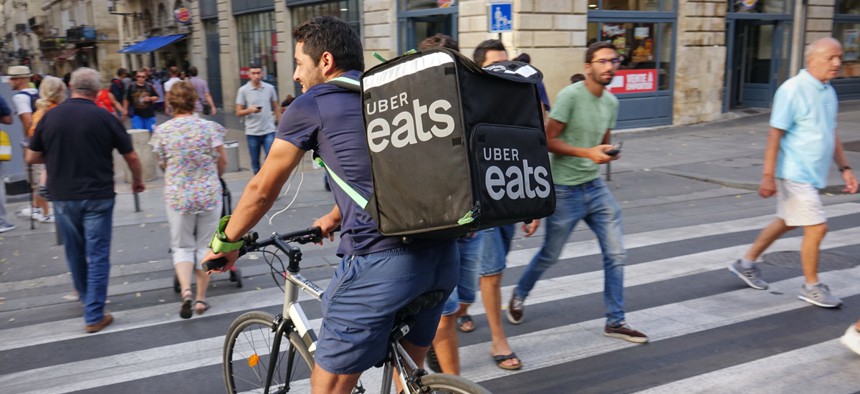The Gig Economy is Actually Pretty Tiny

The "gig economy does not hold the key to the future of work," despite the prevalence of Uber and Lyft in major cities, researchers said. Shutterstock
An analysis from the Economic Policy Institute found that workers who sourced jobs through apps like Uber and Lyft comprised just a minuscule fraction of the overall workforce.
Despite frequent prognosticating that the gig economy will overtake traditional jobs in the near future, the vast majority of employed Americans continue to work in standard occupations, according to new analysis from the Economic Policy Institute.
“There has been much discussion and often concern that most of us will become independent contractors and an increasing share of independent contractors would be gig economy workers,” reads the report. “This narrative has developed in a largely fact-free environment in which a lack of solid data has led to conclusions based on anecdotes.”
These findings support a report last year by the Bureau of Labor Statistics, which found that a tiny number of workers were in the so-called gig economy. Researchers with EPI and the Center for Economic and Policy Research also analyzed data from the BLS' Contingent Worker Supplement, the first official empirical look at “non-traditional” work in 12 years. According to the data, in May 2017, just 1 percent of workers were “gig economy workers whose tasks were electronically mediated,” or sourced through technology platforms like Uber, Upwork or TaskRabbit.
Moreover, in the workforce as a whole, 89.9 percent of people had a standard work arrangement as their main job, slightly up from 89.1 percent in 2005. Put another way, “nonstandard work arrangements," such as independent contractors, amounted to less than 11 percent of jobs in 2017, the analysis says.
Those figures, corroborated by a separate study conducted by the JP Morgan Chase Institute, “suggest that, despite the ubiquity of Uber and Lyft drivers in our major cities, the gig economy does not currently hold the key to the future of work,” researchers wrote.
It’s possible, researchers continued, that experts believed the gig economy would grow at a record pace because the industry as a whole seemed to appear almost from nowhere. According to the JP Morgan study, “employment in the gig economy was negligible in 2013, so the rise to 1.0 percent, starting from such a low base, represents a very fast rate of growth and that may be what misled observers.”
But that study also showed that most people who took on gig economy work “do it for three months or less and usually as a second job,” meaning it’s a short-lived undertaking that usually does not replace more traditional employment arrangements.
Because of this, EPI researchers argued it would be premature to enact labor laws to specifically protect “online gig economy” workers like Uber and Lyft drivers, who make up a small fraction of the overall workforce. Existing laws, however, could be updated to better protect the “vast majority of workers who currently, and for the foreseeable future, will be employed in...standard employer-employee relationships.”
And other temporary workers may require specific protections as well, particularly older Americans who are more likely to be independent contractors than their younger counterparts.
“Existing labor laws and social protections are often linked to people who work for an employer, often on a full-time and relatively continuous basis,” researchers concluded. “Labor and other laws provide fewer protections for independent contractors, and the fact that so many older people are classified as independent contractors means that policies must address their concerns for social protections as they contemplate retirement.”
Kate Elizabeth Queram is a Staff Correspondent for Route Fifty and is based in Washington, D.C.

NEXT STORY: A Mayor’s Perspective: Women and Automation on the Rise





